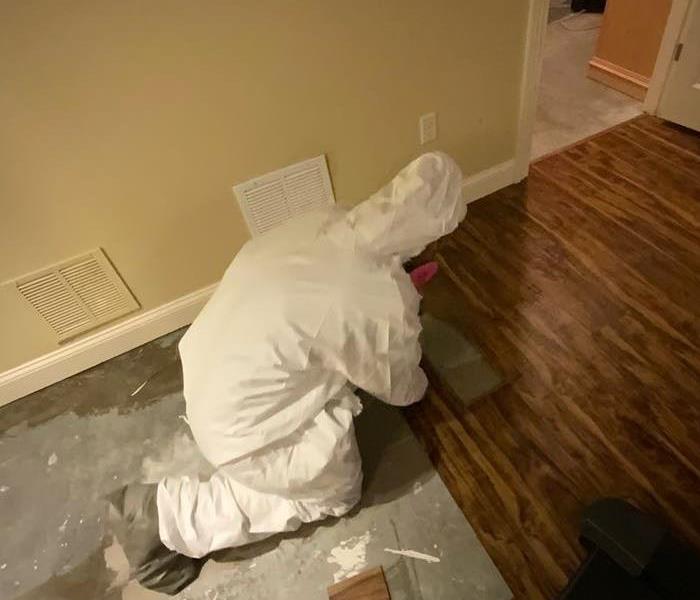The Hidden Threat: Mold Growth Under Vinyl Floor Tiles on Cement Floors
5/28/2024 (Permalink)
 When in doubt, don't hesitate to contact SERVPRO for expert mold remediation services in the Hollis area.
When in doubt, don't hesitate to contact SERVPRO for expert mold remediation services in the Hollis area.
Vinyl floor tiles laid on cement floors are a popular choice for homeowners due to their durability and ease of installation. However, what many homeowners may not realize is that moisture can easily become trapped beneath vinyl flooring, creating the perfect environment for mold growth. In this SERVPRO® blog post, we'll explore the rapidity with which mold can proliferate under vinyl floor tiles on cement floors and the steps homeowners can take to prevent this silent threat.
Understanding the Risk:
Trapped Moisture: Vinyl flooring, especially when installed over cement floors, can trap moisture from various sources, such as spills, leaks, or high humidity levels. This trapped moisture provides the ideal breeding ground for mold growth.
Dark, Warm Environment: The space between vinyl tiles and the concrete subfloor creates a dark, warm environment conducive to mold growth. Mold spores, which are ubiquitous in the environment, can easily take hold and proliferate in these conditions.
Rapid Mold Growth:
24-48 Hours: Mold can begin to grow within 24 to 48 hours under the right conditions. Once moisture becomes trapped beneath vinyl floor tiles, mold spores present in the environment can quickly colonize and spread, posing a threat to indoor air quality and the structural integrity of the flooring.
Hidden Growth: Mold growth under vinyl floor tiles often goes unnoticed until it becomes extensive. By the time visible signs, such as discoloration or a musty odor, appear on the surface, the mold infestation may have already spread extensively beneath the flooring.
Prevention Strategies:
Ensure Proper Installation: Proper installation is crucial to prevent moisture from becoming trapped beneath vinyl flooring. Ensure that the concrete subfloor is clean, dry, and properly sealed before installation.
Address Moisture Sources: Address any sources of moisture in the area, such as leaks or high humidity levels. Ensure that the space is adequately ventilated to promote air circulation and prevent moisture buildup.
Regular Inspection: Regularly inspect the area beneath vinyl floor tiles for signs of moisture or mold growth. Look for discoloration, warping, or a musty odor, which may indicate the presence of mold.
Prompt Remediation: If mold growth is detected, it's essential to take prompt remediation measures to prevent further spread. Contact a professional mold remediation company like SERVPRO to assess the extent of the mold infestation and implement effective remediation strategies.
Conclusion:
Mold growth under vinyl floor tiles on cement floors can occur rapidly and pose a significant threat to indoor air quality and structural integrity. By understanding the risk factors and implementing prevention strategies, homeowners can mitigate the threat of mold growth and ensure a healthy living environment for their families. When in doubt, don't hesitate to contact SERVPRO for expert mold remediation services.

 24/7 Emergency Service
24/7 Emergency Service